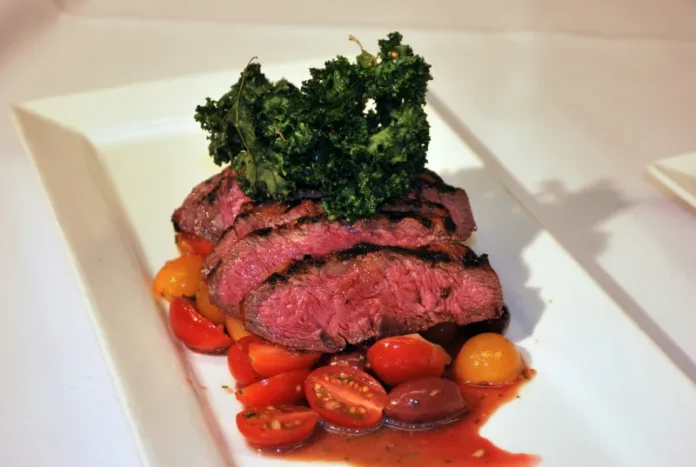We’ve all heard it said — “the bloodier, the better.” While we may agree with the sentiment, the delivery has always seemed a bit crass. What you might not have realized, though, is that it’s also incorrect. That delicious flavor juice that makes our favorite steaks and burgers oh-so-moist and tender is not actually blood at all. So, what is the red juice in steak? Contrary to popular belief, this red, juicy, savory magic is actually something called myoglobin, or “purge” to those in the biz.
In both raw and cooked red meats, myoglobin and water combine inside meat to create a blood-red liquid substance that can admittedly look, well, bloody. There can be more or less “purge” present depending on the beef’s particular cut, age, how it’s packaged, whether or not it’s been previously frozen, and a number of other factors. Myoglobin/purge is also what you find all over your hands and grocery cart if you’ve forgotten to bag your ground beef. It’s also what can be found all over your cutting board if you slice your steak too early.
Recommended Videos
Skip Ad
What is myoglobin?

Myoglobin is a protein in red meat that carries oxygen and stores it in muscle cells. It’s a necessary element for muscles that get frequent use, and therefore, need a lot of oxygen. Myoglobin is also the element that separates red meat from white meat. The more myoglobin cells that are present in meat, the redder it is. Animals that are considered “white meat” in the culinary world, like poultry and seafood, are named so because of their low levels of myoglobin.
While this protein may resemble blood in appearance, it isn’t related to blood at all. In fact, during the slaughter process, all of the blood is drained from the animal. So, even in the freshest of red meat, no blood should be present. It’s also worth noting that myoglobin is the reason steak looks different according to how it’s cooked. Myoglobin darkens as it cooks away, becoming hemichrome, a substance that results in a tan color when cooked to medium. At well-done levels of heat, hemichrome and myoglobin become metmyoglobin, which turns the meat a gray color. When red meat is cooked to (correct) levels of medium rare to medium, the myoglobin remains bright red, flavorful, and juicy.
So, for those who’ve always been somewhat squeamish about rare or medium rare steaks due to their “bloodiness,” you can rest assured that you have nothing to fear and can now start ordering your steaks correctly. As for the others, while it may be fun to request that your steak remain “bloody” when ordering it rare, it is quite incorrect. Of course, you could always order it extra “myoglobin-y,” but that doesn’t really have the same ring to it.



